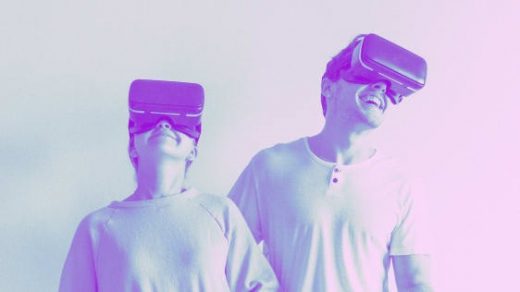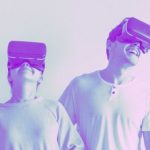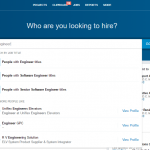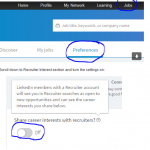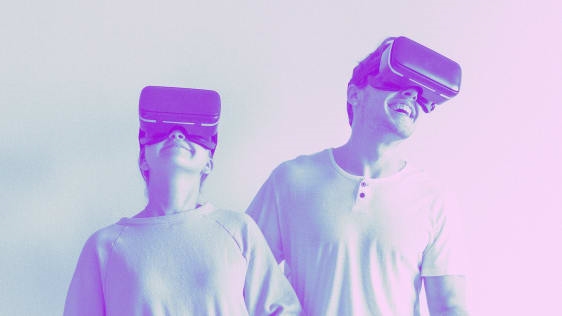This LinkedIn Expert’s Tips For Nailing Nontraditional Job Interviews
Standard interview tactics still dominate the job market, but they might not for long. Here at LinkedIn, our 2018 Global Recruiting Trends report found that a majority of talent professionals think familiar practices–like structured interviews, phone screens, and work assignments–while still effective, are falling short, especially when they’re trying to suss out soft skills like creativity and leadership abilities.
That’s driving interest in experimentation. So while tech-driven and otherwise outside-the-box interviews might not be the norm just yet, chances are job candidates will be encountering them more often in the months and years ahead. Here’s what you need to know to prepare.
Virtual Reality Job Interviews
Virtual reality (VR) and augmented reality (AR) are steadily creeping into the hiring process. Twenty-eight percent of hiring and recruiting professionals we surveyed see VR’s potential to reshape interviewing for the better.
Lloyds Banking Group, which is a client of LinkedIn Talent Solutions, puts final-round candidates into simulated VR environments to see how they approach situations and solve tasks. This gives hiring managers firsthand insight into a candidate’s authentic abilities, rather than just listening to their rehearsed answers to questions. Some hiring experts believe VR can help reduce unconscious bias and improve engagement with potential new hires. In the U.K. and Ireland, L’Oreal is piloting a VR tour of its headquarters for new grad candidates, as well as a VR meeting scenario to help recruiters understand job seekers’ personalities and judgment.
How to prepare: The point of a VR interview is that it’s not about coming prepared to explain how you think, but showing how you handle real-life situations. So rely on the soft and hard skills you’ve already built up, and just be your authentic self. Just make sure your skills are as up to date as your resume is–because you’re going to be using them. Feeling unsure? Look for online courses in your field to fill in any gaps.
Out-Of-Office Interviews
53% of recruiting and hiring managers told us that breaking out of the boardroom has its benefits–which means you may be invited to more “casual interviews” than you’re used to.
Shannon Brayton, LinkedIn’s CMO, takes prospective hires out for a meal, noting that “whatever behaviors you spot during breakfast or lunch are quite likely to pop up again in other settings.” The goal here is simply to get a better read on a candidate’s personality traits and character. Other companies go beyond casual dining. Daimler AG’s Research and Development team created a program to take top candidates for a car ride with their prospective boss–partly to test how they deal with the day-to-day and the unexpected, but also just to help everybody relax and get to know each other.
How to prepare: A casual interview is still an interview. Don’t let your professionalism slip just because you’re at a restaurant (or in a car). Dress appropriately for the location, and remember that you’re being evaluated on your behavior and reactions to unfamiliar situations, not just your skills.
Talent Auditions
A good interview doesn’t always translate to a great hire. The so-called “talent audition” is similar to a practicum, designed to let employers see candidates in action to judge how they’ll perform on the job. The tech company Automattic has been doing this for years, and investment company Citadel recently picked up the practice as well–setting up about 100 students to compete for cash by teaming up and using data to solve business problems. Recruiters on hand assess how participants think, code, lead, and collaborate. Citadel (also a LinkedIn client) has told my colleagues here that it’s led to dozens of hires. More than half the hiring experts we surveyed said they’re interested in experimenting with talent auditions, too.
How to prepare: Auditions are a great way for employers to assess both on-the-job potential and soft skills, so come prepared to play up both. You’ll be ready to do your best work, but don’t forget to be a team player, show initiative, and be nimble. Depending on the format, collaboration might be key, so ask lots of questions and communicate like a pro.
Your next big career break could come inside a VR headset. But don’t let the technology intimidate you; with many companies exploring new interview formats like these, soft skills will still be key. Of course, it’s always important to come prepared with the basics: Learn everything you can about the company, the department you would work in, the hiring manager, and the work they do. Be ready to tell relevant stories about your achievements and make connections to the work you’d be doing.
Just be flexible about the context–you may be sharing all that in the front seat of a Mercedes, rather than across a conference table.
Jennifer Shappley is senior director of Talent Acquisition for the Global Sales and G&A divisions at LinkedIn.
Fast Company , Read Full Story
(42)

